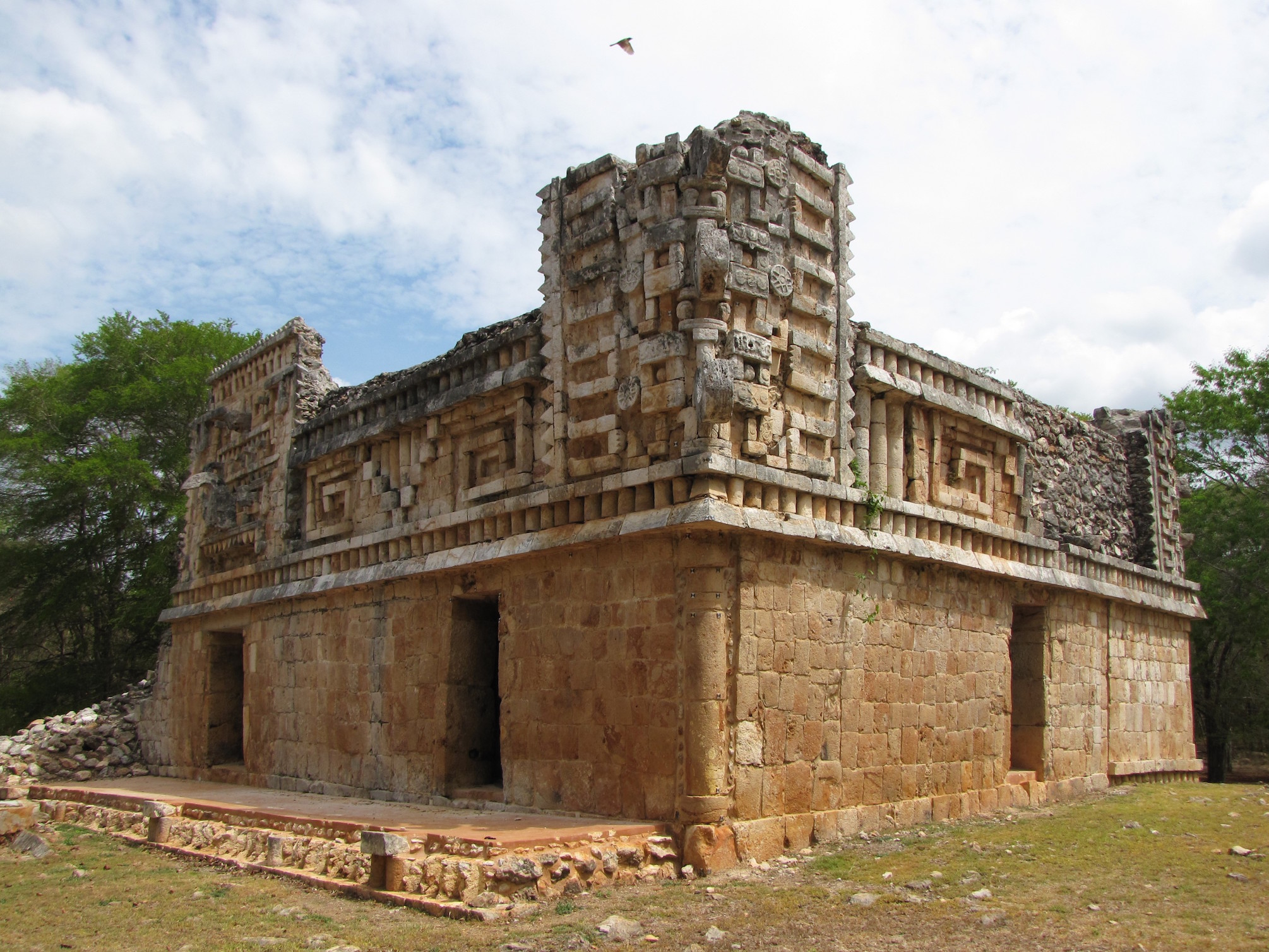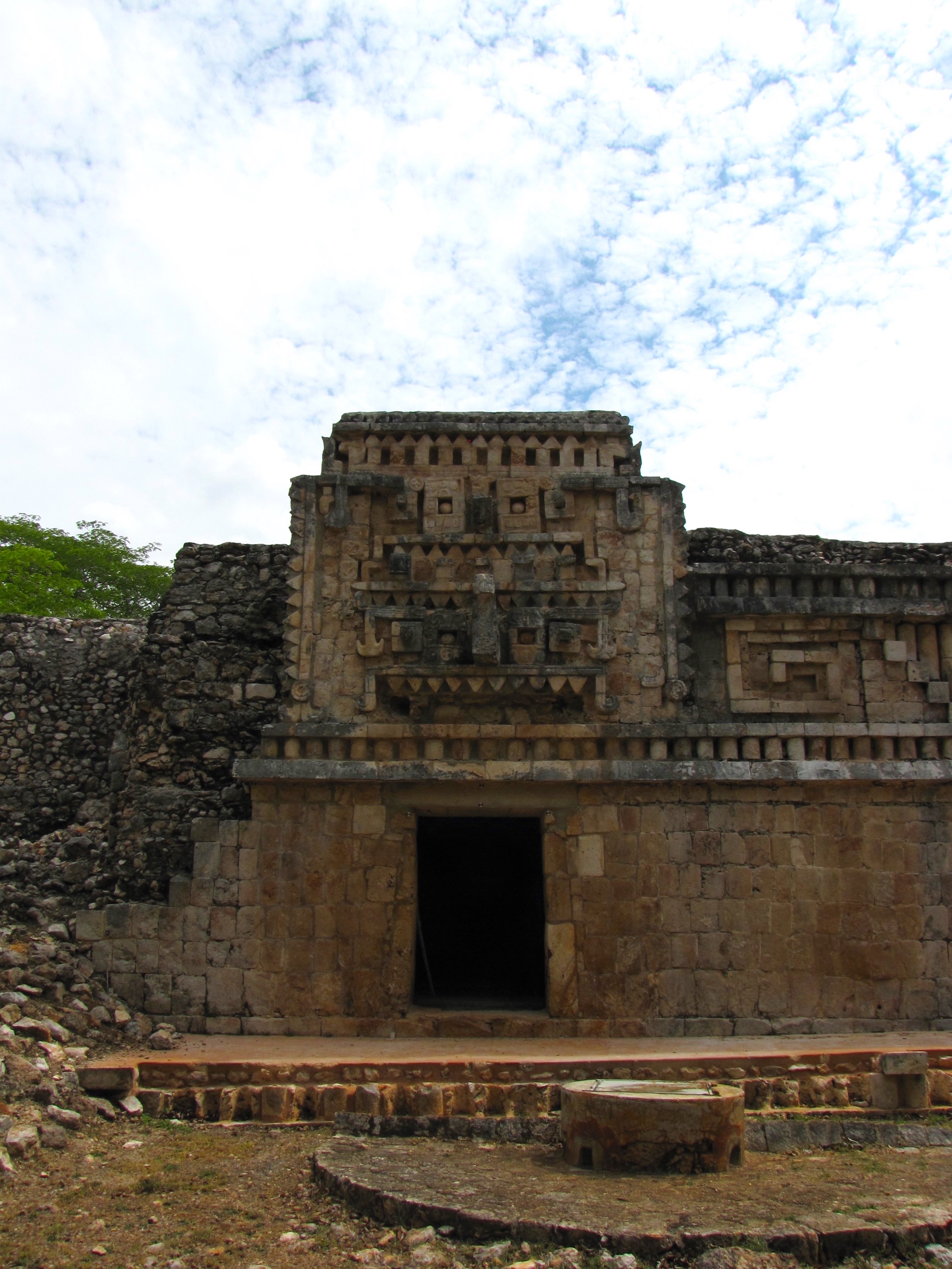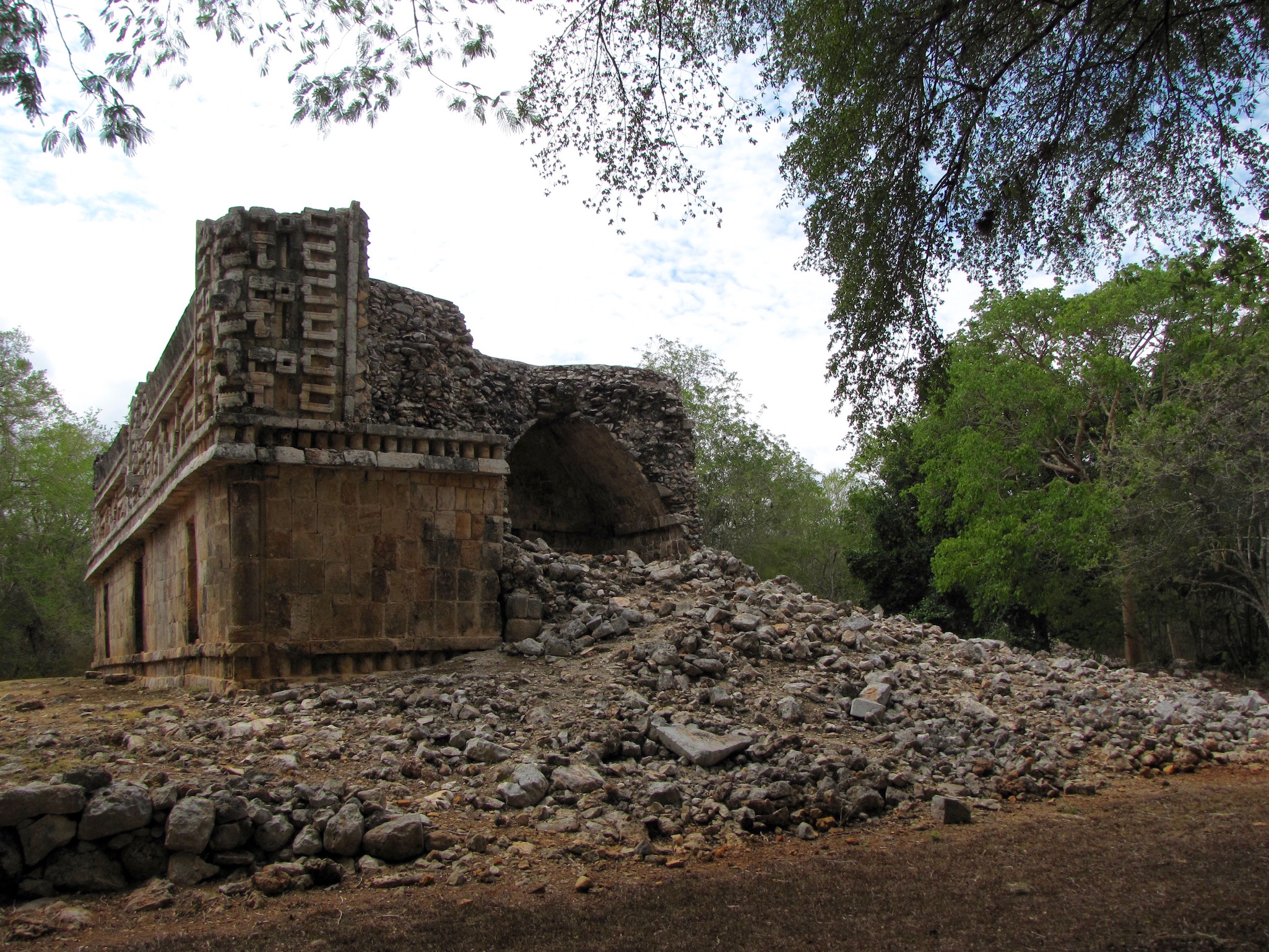
Departing from Sayil, we continued east for 5.5km until we reached another gravel drive branching off to the south, this time leading to Xlapak.
Unlike the other stops along the Puuc Route, little Xlapak is not officially inscribed by UNESCO within the Uxmal World Heritage Site. This is probably because the visitable area includes only one well-preserved building (Structure 1, aka, the “palace”), while the rest of the former city still lies in near-complete ruin. And yet, the singularity of this building, which seems to stand alone within an encroaching jungle, lends it a jewel-like quality unmatched by the larger and more elaborate structures elsewhere.

From the parking area, we followed a stone-lined footpath under a canopy of slender but densely growing trees. After the open and expansive locations of Sayil, Kabah, and Uxmal, the trail through Xlapak felt unusually intimate—almost eerily so.
After about 200 meters, we arrived at the north façade of the palace. This is the best preserved part of the building, with its step-and-fret frieze bordered by three sets of long-nosed masks stacked in triplicate at the corners and above the central doorway.

The frieze wraps all the way around the building (or did at one time, when the exterior walls were still fully intact), and it’s probable that the east and west sides were once identical. Likewise, the design of the south wall is similar to that of the north, in that both originally possessed three doors and a frieze divided into two equal sections.

However, the southern façade boasts two large masks above its central doorway, just to the right of the pile of rubble that was once the structure’s southwest corner, that are unlike anything else on the building. With their long, hooked noses and modular construction, these faces bear some resemblance to other Puuc depictions of Chaac or Witz. And yet they also display unusually wide mouths, the upper jaws of which are filled with regular, serrated teeth. The noses, too, are turned in the opposite direction of most Chaac masks, curving upwards rather than down. It is unclear whether these differences are iconographically significant or simply a matter of style, but it is possible, as Andrew Coe has suggested, that the faces represent Tlaloc, the goggle-eyed rain god of central Mexico, rather than the Maya counterpart of Chaac (370).


Continuing down the path leads to Group 2, but there is little to see here for the casual visitor. So little, in fact, that we have no photographs from this part of the site and I can no longer remember what it looked like. In another context, that might have been disappointing. At the time, however, we still had two more sites to visit that day before we needed to drive to Campeche and leave the Puuc behind. As a result, we were actually grateful to find the rest of the site undemanding and kept our time there brief.
Highly subjective personal rating: 7.5/10 [Although there is less to see here than at the other stops along the Puuc Route, Xlapak’s compact but scenic grounds offer a pleasant break from its more overwhelming neighbors. Also, it’s free to visit.]
All photos by Renée DeVoe Mertz, May 24, 2o15.